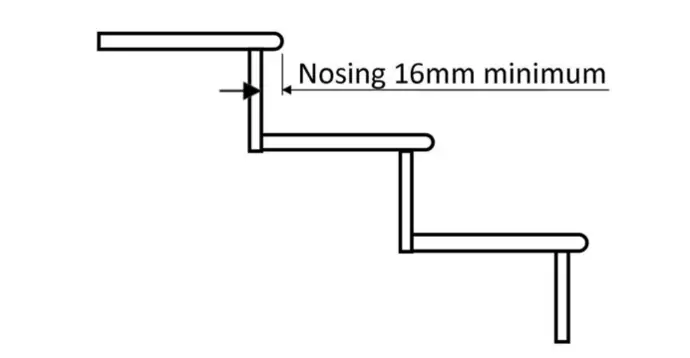What is Stair Nosing?
Understanding Stair Nosing: Safety and Design Essentials
Introduction
Staircase nosing might not be a term familiar to everyone, but it plays a crucial role in the safety and aesthetics of staircases. It refers to the rounded or bevelled edge on the tread of each step that overhangs the riser below. Whether in homes, office buildings, or public spaces, the design of stair nosing is something that affects us all, often without us even noticing.
What is Stair Nosing?
Staircase nosing refers to the edge of the stair where most foot traffic occurs. Typically, it projects beyond the riser—the vertical part of the stair—providing both a durable surface to withstand wear and a clear demarcation of the stair's edge. This is essential for visibility and safety, helping to prevent falls and trips.
Why is Stair Nosing Important?
- Safety: The primary purpose of stair nosing is to enhance the safety of a staircase. By providing extra space for the foot to rest, it reduces the likelihood of slips and falls. The added traction from materials used for nosing can also play a key role in preventing accidents.
- Visibility: Stair nosing often contrasts in colour with the rest of the stairway, improving visibility. This is particularly important in dim lighting conditions or in buildings where elderly or individuals with visual impairments might be present.
- Durability: Stairs are high-traffic areas subject to significant wear and tear. Nosing helps to protect the edges of the stairs from getting worn down too quickly, maintaining the integrity and safety of the staircase over time

Materials and Design Consideration
Choosing the right material and design for stair nosing can depend on several factors including aesthetic preferences, the type of building, and budget. Common materials include:
- Metal: Often used in commercial or industrial settings for its durability and strength.
- Wood: Common in residential buildings, wood nosing can be easily integrated into existing stairs.
- Rubber and Vinyl: Cost-effective options that also offer good traction and easy maintenance, suitable for schools and hospitals.
Installation and Compliance
Steps should all be level and in a private/domestic property, nosing overlaps must be at least 16mm. No nosing for offices.
All steps in staircases for offices, flats, or public areas must be uniformly level. Standard nosing, which extend beyond the risers, should be avoided to minimize the risk of tripping. Instead, use flush nosing on all public staircases, especially when no passenger lift is available. The height of each step, known as the rise, should range from 150mm to 170mm.
The horizontal distance from the front of one step to the front of the next, known as the going, should be between 250mm and 450mm. In cases where a staircase may not be suitable, particularly at building entrances, the installation of a ramp might be necessary. Always consult a building inspector to ensure compliance with specific local building regulations and requirements.
These regulations often specify dimensions and materials to ensure that the stair nosing is effective and safe.

Ready to create your dreams stairs?
Staircase nosing is a small but significant part of architectural design that plays a vital role in making spaces accessible and safe. Whether you are building a new property or retrofitting an existing space, considering the right type of nosing can greatly enhance the functionality and safety of your stairways.
Choosing the correct stair nosing involves understanding both its practical purposes and the specific needs of your building. With a range of materials and designs available, there’s an option to suit every requirement and aesthetic preference.
At Ovoms, we are committed to helping you make your dream staircase reality. Get in touch at 020 3667 3330 or drop us at sales@ovoms.com
